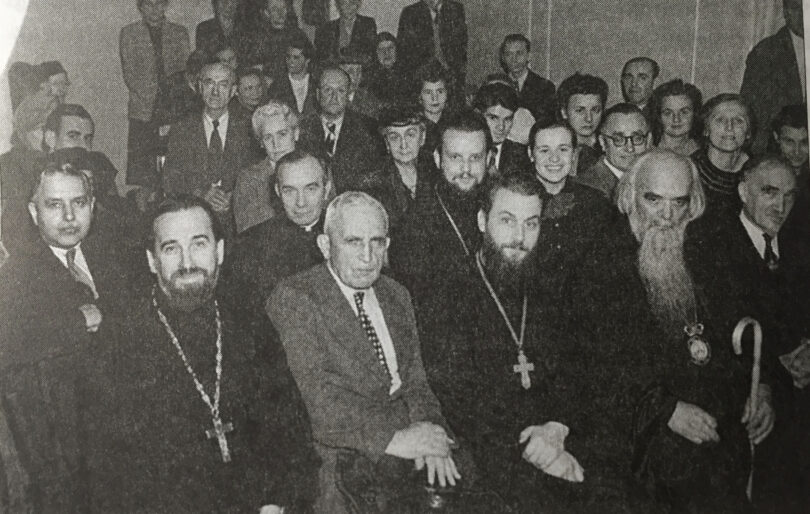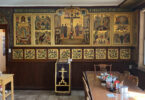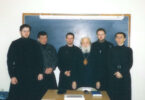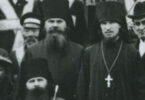Protopresbyter Alexey Ionov passed away on this day in 1977.
I have written here in these reports about the North American Metropolia. This was formerly the only diocese to exist outside of Russia before the 1917 Revolution. Between 1926 and 1970, the Metropolia existed independently (in the union with the ROCOR from 1934 until 1946). One of the first acts of the newly elected Russian Patriarch Pimen in 1970 was to grant autocephaly to North American Metropolia. Thus the word autocephaly became as popular in Russian émigré church circles in the US and Canada as did tomos in Ukraine five years ago. Since the Russian Church did not have legal rights of corporation in the USSR, the opponents of autocephaly argued that it was the Soviet government and not the Moscow Patriarchate that had granted this autocephaly. At its Bishops’ Council in 1971, the Russian Church Abroad proclaimed the Catacomb Church in Russia its mother church. In the long run, this decision resulted in parishes in Russia being received in 1990 under the omophorion of the ROCOR.
Fr. Alexey Ionov was born in today’s Daugavpils (Dvinsk) in Latvia in 1907. He studied in St. Serge Theological Institute in Paris. In 1932, he was ordained a priest. During the German occupation of Pskov region, Fr. Alexey became a member of the Pskov mission of the Moscow Patriarchate, ministering to the Russian people in territories where most of the churches had been closed down in the 1930s.
At the end of the 1940s, Fr. Alexey arrived in the US. He received the newly founded parish of the Kazan Icon of the Mother of God in Sea Cliff, Long Island. Similarly to the events of the reconciliation of 2007, the reception of autocephaly from the official Church in the USSR triggered emotional trauma connected with the crimes against humanity (especially persecution of the Orthodox Church) committed by the Bolshevik regime. Fr. Alexey, along with a significant number of parishioners, refused to follow his bishops and joined the Russian Church Abroad, the church in which he had been a clergyman in Germany and Austria following World War II.
Fr. Leonid Kishkovsky, the following rector of the parish, appointed by the Metropolia, thus recalled the events:
He was here for a long time, yeah. As a seminarian, I used to visit Sea Сliff parish and meet with some young people here, and [with] Father Ionov, so he knew me pretty well. Also, he knew me because he replaced a priest in Los Angeles in the 1960s and I was an altar server and, anyway, I liked him a lot. When we arrived here under the tragic circumstances, Father Ionov had to vacate the priest’s house and he was still living in Glen Cove, so Matushka and I visited him. And I thought that was the right thing to do. At that time there was a very tense situation in the Orthodox community here. And interestingly, before he was moved by the ROCOR to California, he came to visit us as a kind of friendly visit. We can only imagine how painful it had to be for him but he did it. He died in California and was buried in Novo-Diveevo [NY] after otepevanie [a funeral] in St. Seraphim’s Church.
So, when Father Ionov died in California, and his brother-in-law informed me immediately, I at the end of the liturgy said, “Father Alexei has passed away. I know that the history has been painful, but he married many of you; he baptized many of you; it is time for us to pray for the repose of the soul of the newly departed otets Alexei, and, well, I had two or three somewhat loud parishioners who began publicly objecting that we shouldn’t do that. His body was brought here for the otepvanie and, of course, we went to the otpevanie and we offered, but also learned that they already had the plan to drive by this church where he had served 25 years. And from St. Seraphim’s it was going to go to Novo-Diveevo for burial, but they would drive by here. So, I remember absolutely agreeing. My wife and I agreed that we would open the door to the church, so, when the hearse drives by, the door would be open, and then… My wife’s name is Mimi popularly;
He insisted that the candles had to be lit in the church. I said, “The hearse will be in front of the church for about 5 seconds. I don’t really see the need, but so I stayed at Saint Seraphim’s, and Mimi came here and opened the door and lit the candles and the lampada [oil lamps in front of icons]. And so, the hearse drives by. And a week or two later, we got a lovely letter from Father Alexei Ionov’s daughter who wrote that the last years in this church for the family were very tragic and painful and there was a heavy burden on her heart, and that driving in front of the church, and to see the doors open and the lampada and the candles lit, that it lifted the burden from her heart. So, I was impressed by my wife’s wisdom.
Relevent Resources:
Archpriest Leonid Kishkovsky (+2021), “There is Room for Conversation Even in the Midst of a Severe Conflict,” Historical Studies of the Russian Church Abroad.
A.V.Gavrilin (+2019), “On ROCOR and Latvian Church,” Historical Studies of the Russian Church Abroad.
A. Jordan (+2020), Reminisences, Historical Studies of the Russian Church Abroad.
Dr. Paul Meyendorff, “My Father’s Focus was on the Life of the Local Church in America,” Historical Studies of the Russian Church Abroad.
Fr. Daniel Franzen, “The Mayfield Parish, Congregationalism, and the American Orthodox Experience in the Twentieth Century,” Historical Studies of the Russian Church Abroad.











